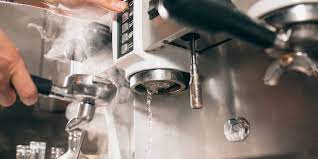For coffee enthusiasts and baristas alike, the quest for the perfect espresso is a never-ending journey. One crucial aspect of maintaining the quality of your espresso is keeping your espresso machine clean. Backflushing is a key maintenance ritual that ensures your machine continues to deliver impeccable shots of espresso. In this guide, we will explore the ins and outs of backflushing, providing you with a step-by-step process to keep your espresso machine in top-notch condition.
What is Backflushing?
Backflushing is a cleaning technique specifically designed for espresso machines. It involves forcing water through the machine's group head (the part where the coffee is extracted) to remove coffee oils, residue, and other impurities that can accumulate over time. Regular backflushing helps prevent clogs, maintain proper water pressure, and ultimately ensures the longevity of your espresso machine.
Tools and Materials:
Before diving into the backflushing process, gather the following tools and materials:
1. Blank portafilter: A portafilter without a basket, designed for backflushing.
2. Backflush disc: A rubber disc or filter that seals the portafilter during the backflushing process.
3. Coffee machine cleaner: Use a specialised espresso machine cleaner, preferably one recommended by your machine's manufacturer.
4. Clean, hot water: Ensure you have a supply of hot water to rinse the machine after backflushing.
Step-by-Step Guide to Backflushing:
1. Remove Coffee Residue:
Start by removing the coffee grounds and residue from the portafilter and group head. Empty the used coffee puck and give the portafilter a quick rinse.
2. Insert the Blank Portafilter:
Place the blank portafilter with the backflush disc into the machine's group head. The backflush disc should create a seal within the group head.
3. Add Cleaner:
Depending on the manufacturer's instructions, add the recommended amount of espresso machine cleaner into the blank portafilter.
4. Engage Backflushing:
Start the backflushing process by initiating the machine's pump. Allow the cleaner to circulate through the group head for about 10 seconds, then stop the pump.
5. Wait and Repeat:
Let the cleaner sit in the group head for a few moments. This allows it to break down oils and residues. After a brief pause, repeat the backflushing process 2-3 times to ensure thorough cleaning.
6. Rinse:
Remove the blank portafilter and run clean, hot water through the group head. This helps flush out any remaining cleaner and residue. Perform this step multiple times until the water runs clear.
7. Clean the Portafilter:
Rinse the portafilter thoroughly to remove any cleaner residue. Make sure there are no traces of the cleaning solution.
8. Dry and Reassemble:
Wipe down the portafilter and group head, ensuring they are completely dry. Reassemble the portafilter with the basket and proceed to the next espresso extraction.
Conclusion:
Backflushing is an essential practice in the world of espresso, ensuring your machine functions optimally and consistently produces high-quality shots. By incorporating this simple maintenance routine into your espresso machine care regimen, you'll not only extend the lifespan of your equipment but also enhance the flavour and aroma of your espresso. Make backflushing a regular part of your coffee ritual, and enjoy the perfect espresso experience every time.

